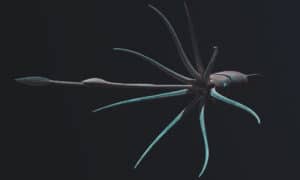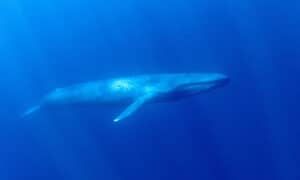Everyone loves baby babies; they’re so adorable! While not as delightful as human infants, you’re sure to be captivated by the fascinating, ocean-dwelling baby squid!
What follows are baby squid amazing pictures and 6 incredible facts that may surprise you.
1. Baby Squid Are Members of an Ancient Family
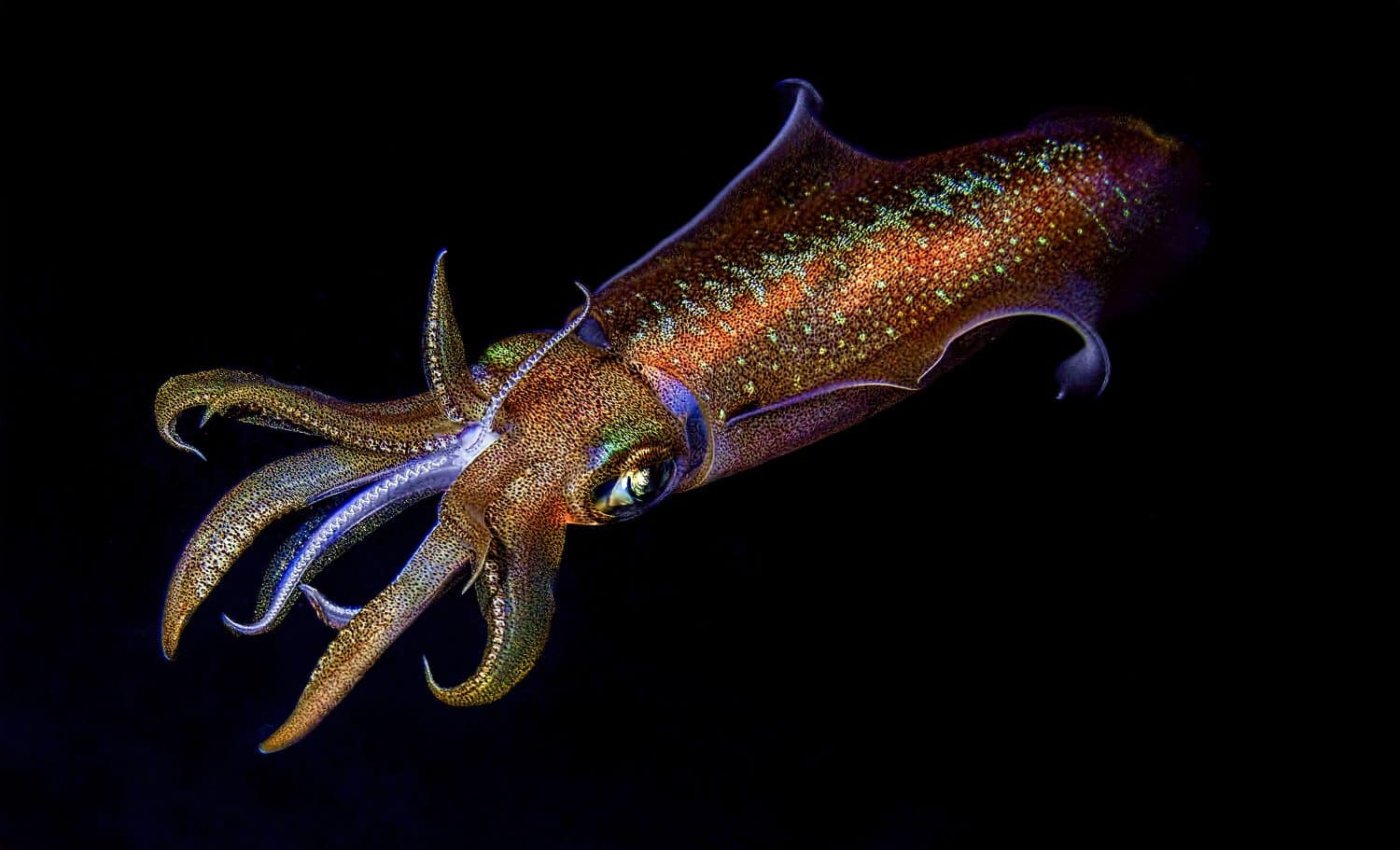
Typical-looking adult squid species, diving at night to find prey deep in the ocean. Squid are cephalopods which have existed for over 500 million years on Earth.
©Eitan Ben Zvi/Shutterstock.com
To fully appreciate these marine creatures in their smallest baby form, you must first learn about their place overall in the diverse animal kingdom.
The remarkable squid (Chiroteuthis imperator) is among the 751 of 975 cephalopods that belong to the family Chiroteuthidae and molluscan class Cephalopoda. Today, there are over 300 species of squid found in all the oceans. They have lived on our planet for more than 500 million years.
While ancient squid species sported external shells at the beginning of their evolution, today’s modern-day, squishy squid with tube-shaped bodies are shell-less animals. Actually, you can call them all mollusks.
Three Family Tree Members
The cephalopods clan also includes three other members: the octopus, cuttlefish, and nautilus. Depending upon the species observed, these three family-tree “cousins” can look and act in similar ways. They all are intelligent creatures who often resort to camouflage and speedy movements to avoid predators.
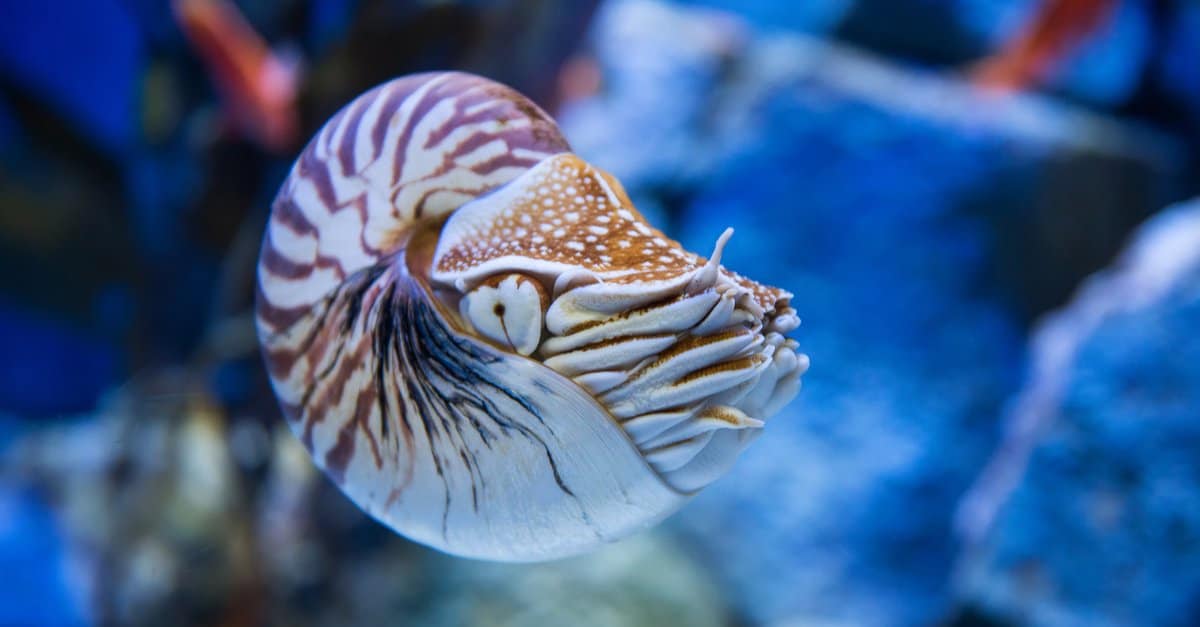
Like squid, nautilus are cephalopods. Unlike squid, they have external shells to help protect them from predators, except for humans who find them easy to catch.
©kikujungboy CC/Shutterstock.com
Species Sizes Vary
Squid range in size when fully grown, and can be between less than 1 inch long to more than 60 feet long. Scientists have discovered that most squid species average about 2 feet in length, or a bit more.
The largest squid species are the Colossal Squid (Mesonychoteuthis hamiltoni) and the Giant Squid (Architeuthis).
The Colossal Squid is the largest squid species by its sheer mass. Generally, specimens will grow up to 33 feet in length, and weigh up to 1,500 pounds. It is rarely seen by humans in its natural environment. In contrast, the Giant Squid is the planet’s second-largest mollusk. It can grow to be between 35 – 45 feet long and typically weighs about half a ton, or 1,000 pounds. The largest specimen ever found so far is said to have tipped the weight scales at almost 2,000 pounds (a ton) and measured nearly 43 feet long.
Despite their massive sizes, believe it or not, both of these monster squids start out as tiny baby squid, just as all squid species do.
2. Baby Squid Parents Engage in a Courtship Ritual
Baby squid just don’t begin living their best lives as babies. Like many animals, they first exist in the form of eggs, created after their male and female parents mate.
The squid love story always begins during the Spring mating season. Like land-loving swans, male and female squid mate only once in their short lifespans. Typically, quite a number of them will congregate together in specific ocean breeding grounds, where males compete for the attention of the females.
Once a male squid in the crowd sees a female he likes, he “courts” her by changing part of his body temporarily to a reddish color. If the female likes what she sees and shows interest, then the male “hugs” the female with a number of his 10 arms, and fertilizes the tens of thousands of eggs inside her body with his sperm.
Inside the eggs, baby squid begin their lives as embryos. Depending upon the squid species, they are anywhere from 0.3 centimeters up to 1 centimeter (about the width of a standard pencil) at this stage.
3. Baby Squid Have Lots of Siblings!

All squid species lay eggs. Some of these cephalopods lay them in clusters, encased in a large gel-like floating sac (seen above), while others lay single eggs.
©Tony Webster / CC BY 2.0 – License
Shortly after mating, the mother squid deposits her eggs on the bottom of the ocean floor in a large grouping covered with a jelly-like material her body produces. Schools of these squid moms do this at the same place, at the same time, as a community activity. However, some squid species choose to release their eggs elsewhere, closer to (or even on) beaches.
Generally, a female squid lays between 12 – 20 egg capsules (“sacs”). Clustered together in large groups, they resemble elongated grapes. Each sac holds anywhere between 180 – 300 eggs. That means each mother can produce roughly 2,000 to 6,000 eggs, or more. While it’s not uncommon to hear of floating masses comprised of 20,000 – 40,000 eggs, some people have reported seeing 100,000 of them deposited by a single mother squid!
Even though each egg is extremely tiny, one female’s sac mass can weigh a lot. Scientists have recorded many of these jelly-looking sacs weighing a whopping 11 pounds.
The egg sacs are translucent, meaning light moves through them but are not clear like a window in your home or car. That makes it somewhat easy to observe the baby squid growing and moving inside their egg homes.
They’re On Their Own!
The baby squid are left alone in their nursery to battle currents and predators. Why? They do not have squid parents to look out for their welfare. Sadly, almost immediately after mating, the male squid dies. And shortly after laying her eggs, the female squid dies, too. (This happens to the vast majority of mating pairs. However, there are some exceptions to this observed biological phenomenon.)
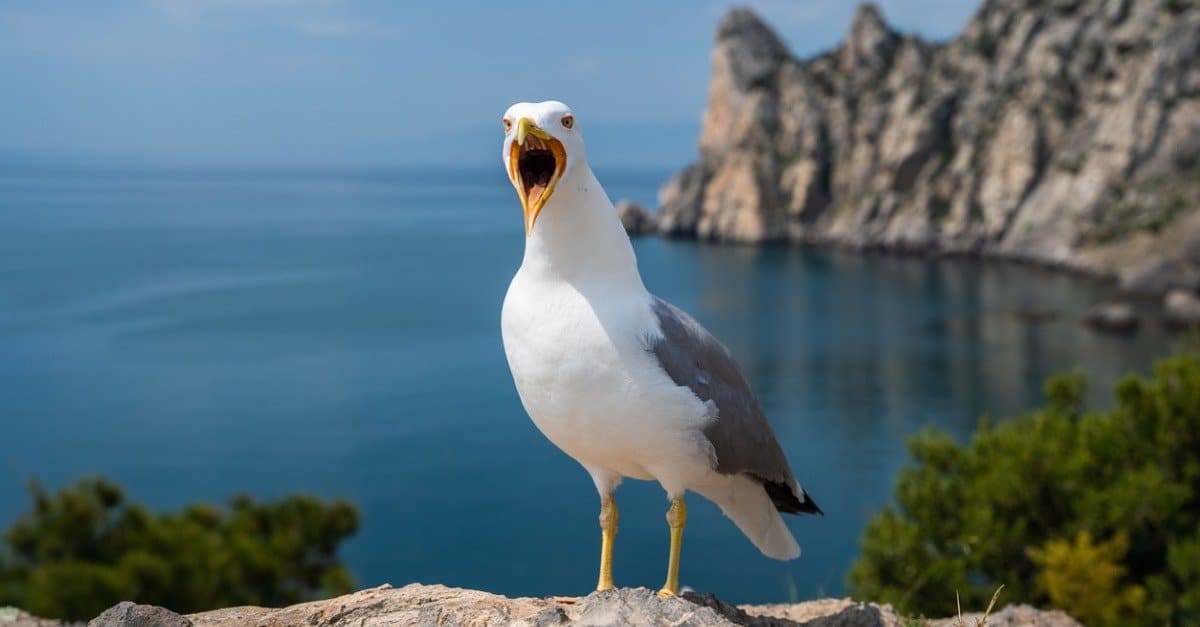
Seagulls are among the birds living near the ocean that enjoy eating baby squid.
©iStock.com/Evgenyi_Eg
That is why it may be best for squid of both sexes, of any species, to hold off their courtship for as long as possible if they want to live long lives! Typically, parents of baby squid live 3 – 5 years before mating.
4. Baby Squid Hatch as Cute Paralarvae
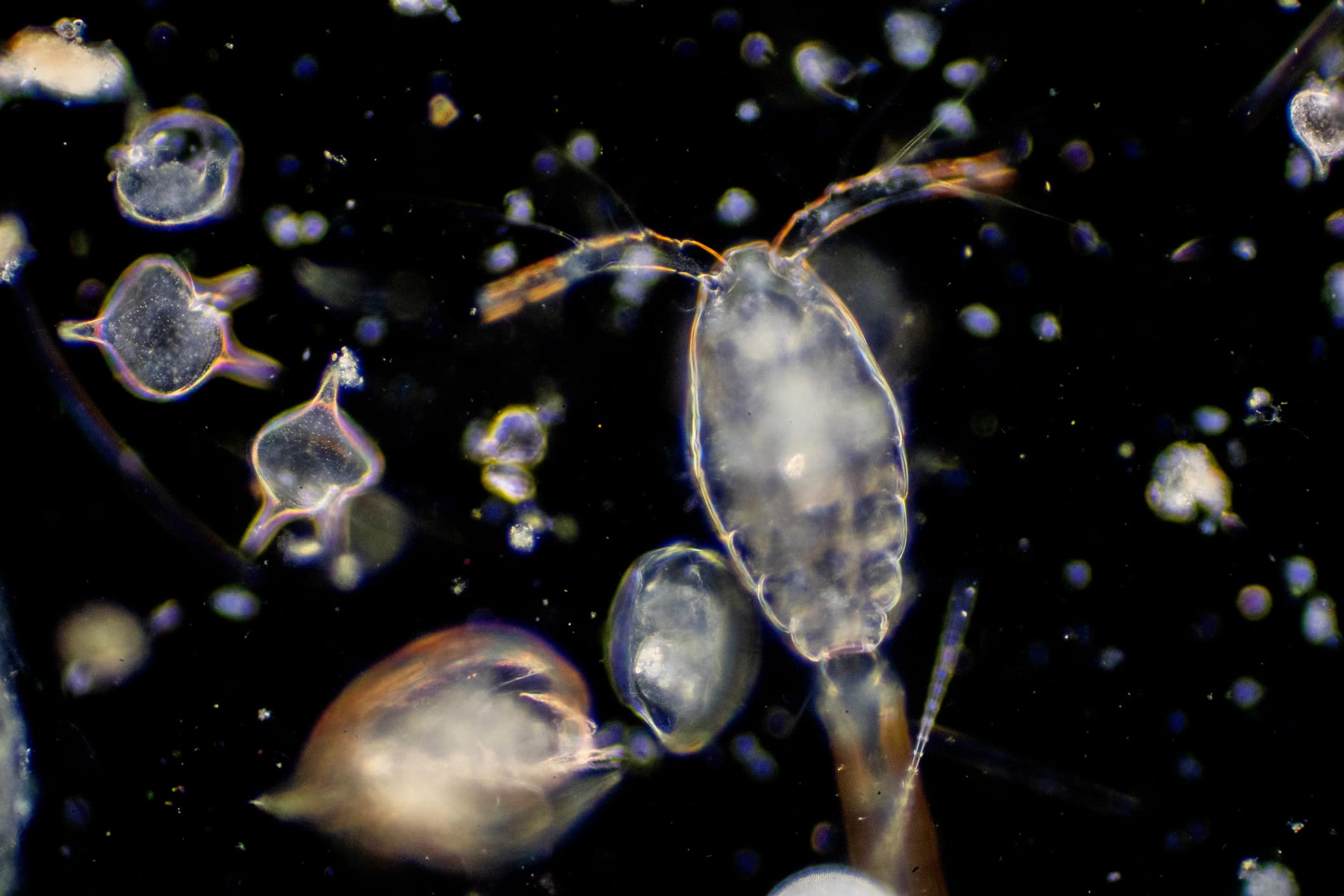
Baby squid enjoy eating plankton, tiny organisms drifting in oceans and seas, in the early stages of their lives.
©tonaquatic/iStock via Getty Images
Baby squid grow inside their eggs for 2 – 6 weeks before hatching. Once free of the sac, they become tiny squiggly, and fast-swimming marine creatures known as paralarvae. They are now the size of a grain of rice. At this stage, they are also known as zooplankton (the name for very small, single-celled animal organisms).
It’s also interesting to note that these hatchlings look exactly like their parents but in a miniature form. This “mini-me” creature possesses all the distinctive squid features of adults: a head, streamlined body, small internal shell (pen), a mantle covering the body’s main section, eight arms, two tentacles, three hearts, and two fins.
Even at this minuscule size, clearly, they’re extremely cute babies!
Hatchlings don’t stay long where they hatch. Instead, they rise from the ocean floor to begin their lives living at the ocean’s surface. They spend their days and nights riding with the currents, and hanging out with (and eating) the tiny plants, animals, and bacteria floating in the same areas called plankton. Most prefer to thrive along coastal regions instead of the wide-open areas of the seas.
Baby Squid Taste Good!
But life is not easy on the surface. Lots of marine animals love to eat zooplankton like baby squid. For example, sharks, sperm whales (the largest of the toothed whales), sea birds, seals, turtles, otters, sea lions, tuna, dolphins, and lots of different predatory fish species won’t turn down a good squid meal.
Humans especially love to eat baby squid. Around the world, they are considered a common delicacy served at restaurants and/or at homes, and fixed in myriad ways to reflect a region’s particular cuisine. Cooks everywhere appreciate how most of this delicious cephalopod can be consumed (tentacles, ink, and body).
The only parts that should not be eaten by humans are the beak (a squid’s hard mouth made of chitin) and the pen, which is basically the animal’s small, internal shell structure made of chitin and protein.
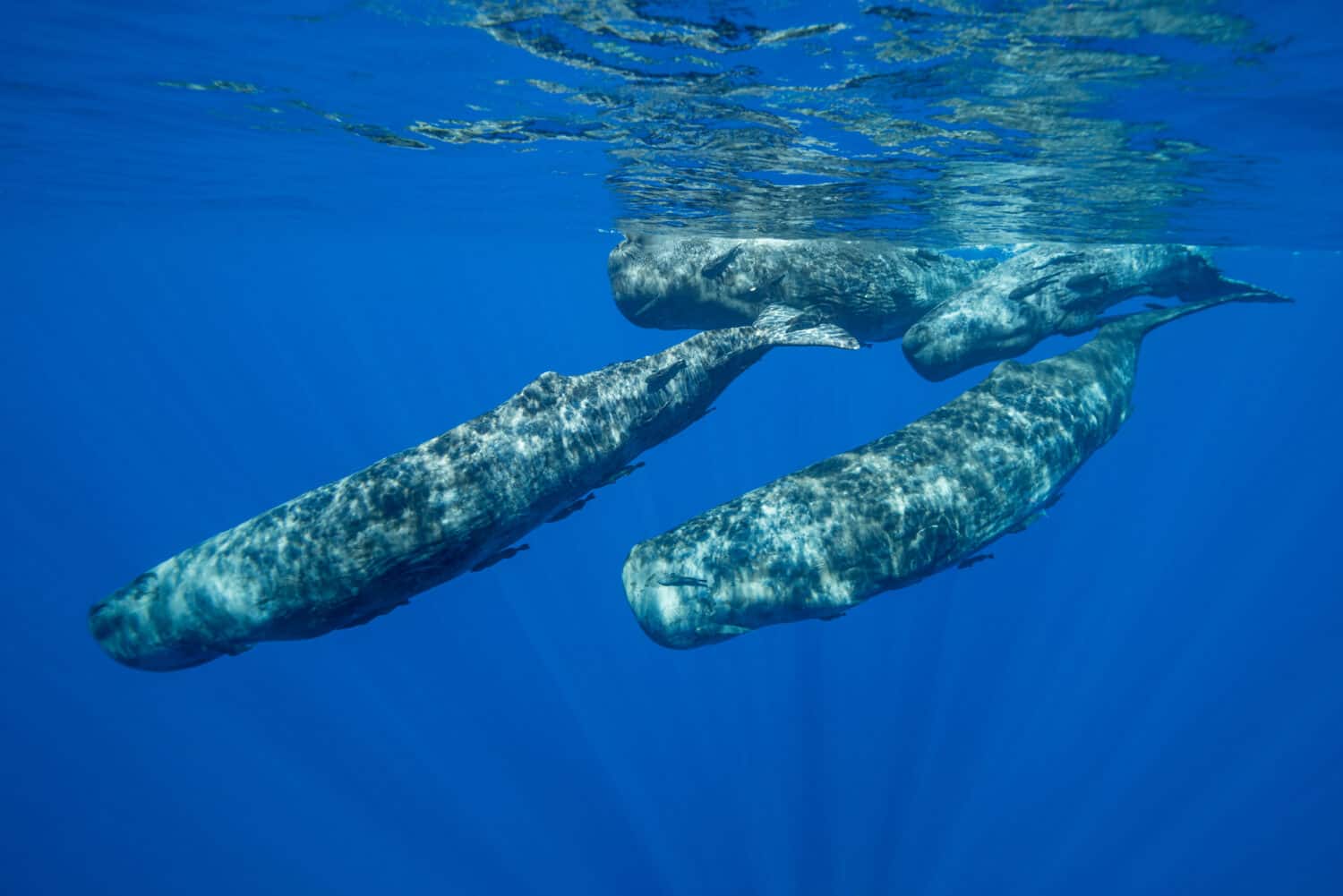
Sperm whales are known to make squid a staple in their diet.
©wildestanimal/Shutterstock.com
Unfortunately, the fact baby squid are considered great-tasting food means the vast majority of these young cephalopods are gobbled up days or weeks after hatching. Only a few lucky ones from each female squid’s mass of eggs ever make it to the “young squid” stage or adulthood.
5. Baby Squid Hatchlings Possess Super Powers

Incredible fact: After hatching, when in danger a baby squid ejects “ink” from its body. This creates a “smoke screen” in the water to help it escape! The ink may be bright red or other colors.
©Golubovy/Shutterstock.com
After hatching, baby squid immediately possess and can start using two biological “superpowers.” These are the same powers squid cephalopods of all ages use throughout their life cycle.
Color-Changing Creature
First, these baby squid have the ability to change colors to help blend into their surroundings and avoid getting eaten at an early age.
The hatchlings can immediately switch back and forth from one skin color to another. They can make their whole bodies look bright red, sandy brown, or a rainbow-metallic blend of colors (blue, green, and red) to suit their needs.
Ink for Defense
Second, the hatchlings now can produce and squirt a defense liquid called “ink” from their bodies. It looks like ink found in a human’s writing instrument and can range in color from black or brown, to deep shades of red or blue. This substance is shot out forcibly from the baby squid’s body when it feels threatened or is actually in dire danger from another creature.
The ink quickly becomes a moving “smokescreen” cloud positioned between the little squid and the now-confused menace. The hatchling then escapes by darting away quickly to a more safe place.
6. Baby Squid Aren’t Small for Long

While not quite as adorable when hatched, these young specimens still look cute! You can see one rainbow-colored baby squid among its sandy-colored brethren.
©Nurdiyansyah Renwarin/Shutterstock.com
Months after baby squid hatchlings grow bigger from feasting on plankton, they become juveniles. These older baby squids then move to a different living environment, shared by adult squids. They begin a new stage of life swimming below the surface of the seas. Some prefer shallow ocean waters for their watery homes, while others like deeper ocean depths.
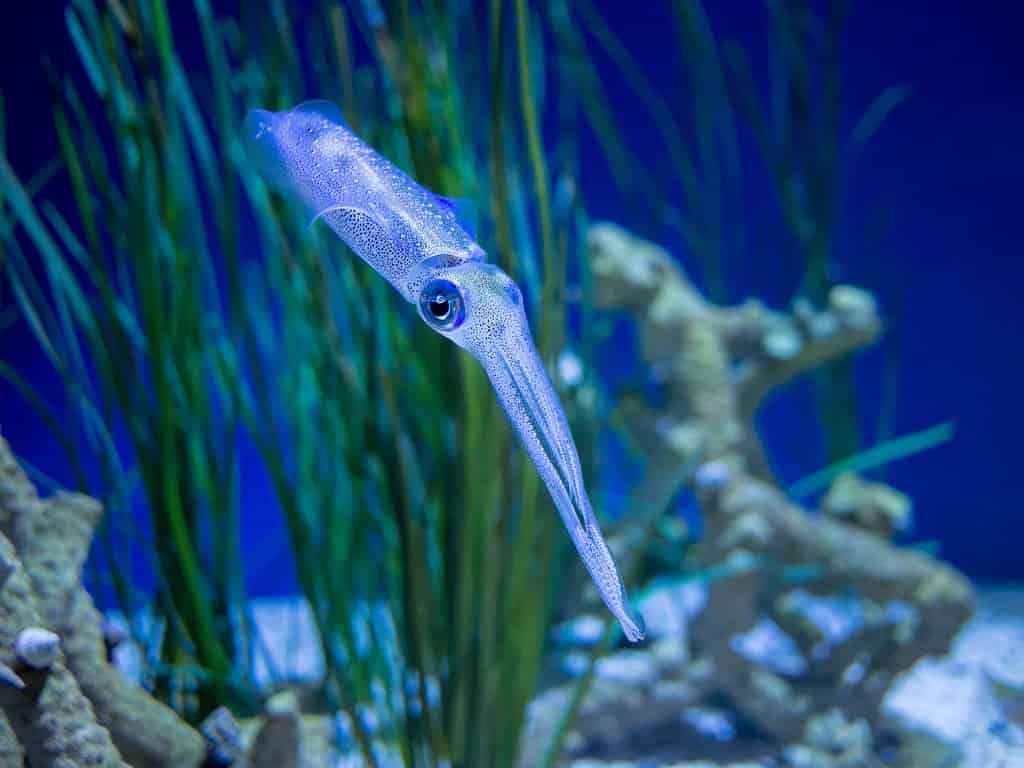
After baby squid grow up into juveniles, they leave the ocean surface to begin living deeper down in the waters. Many enjoy swimming in the seagrass forests.
©Rhododendrites, CC BY-SA 4.0, via Wikimedia Commons – License
As juveniles, baby squid stop feeding on tiny plankton. Instead, they begin to hunt and feed on small crustaceans, krill, and small fish; a diet similar to that enjoyed by adult squid. Shockingly, some juveniles will even make a meal out of other squid! They plow through a few stages of growth as juveniles.
Adult Lifespans Vary Greatly
As mentioned earlier, different squid species live different lengths of time, from just six months (gasp!) all the way up to six years.
Depending upon what squid species we’re talking about, it takes 1 – 2 years (on average) for a baby squid to grow up and become a mature adult.

Adult squid swimming in his underwater home near Honduras.
©iStock.com/MichaelStubblefield
Baby squid have a fascinating life journey, and we hope you enjoyed learning more about these amazing cephalopods!
The photo featured at the top of this post is © achiaos/Shutterstock.com
Thank you for reading! Have some feedback for us? Contact the AZ Animals editorial team.




